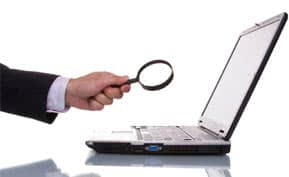Payroll
7 Must-Have Features of Payroll Software

Payroll. One simple word with two very different reactions. To the employees tucked away in their cubes, the word is likely to trigger happiness — it means their paycheck is on its way. To the HR staff and accountants, payroll can cause instant emotional turmoil. Headaches, cursing and knotted shoulders caused by disorganization, outdated procedures and clunky old software.
Moving into the twenty-first century, with the rapid advancement of technology, the power players of yesteryear are gaining some new competition in the HR and payroll software markets. With the implementation of one of these payroll software platforms, payroll doesn’t have to be a stress-inducing, labor-intensive process. Teams can finally trust the software to work for them — taking the pain out of payroll.
Being experts in the software world, we thought we’d gather the must-have features of payroll software and share the benefits and potential impact of each:
1. Payroll Processing
![]() With the proper software, processing payroll can be done in relatively no time. Most systems offer integration capability, which, depending on your platforms for payroll and timekeeping, can link systems together to automatically pull hours, pay rates, etc. to process payroll, make ACH deposits and print physical checks. Note: those still using paper time cards or a system that doesn’t integrate will have to enter required information manually before processing.
With the proper software, processing payroll can be done in relatively no time. Most systems offer integration capability, which, depending on your platforms for payroll and timekeeping, can link systems together to automatically pull hours, pay rates, etc. to process payroll, make ACH deposits and print physical checks. Note: those still using paper time cards or a system that doesn’t integrate will have to enter required information manually before processing.
2. Direct Deposit
![]() Employers and employees can both agree, direct deposit has grown to be the preferred method of dispersing payroll. With direct deposit, companies save thousands annually in supplies and processing costs, employees no longer have to worry about lost checks or check fraud, and lastly, the environment wins a little bit too. What’s more, funds are transferred from company accounts directly to employees through Automated Clearing House (ACH), and are available immediately — unlike traditional paper checks that typically have a holding period.
Employers and employees can both agree, direct deposit has grown to be the preferred method of dispersing payroll. With direct deposit, companies save thousands annually in supplies and processing costs, employees no longer have to worry about lost checks or check fraud, and lastly, the environment wins a little bit too. What’s more, funds are transferred from company accounts directly to employees through Automated Clearing House (ACH), and are available immediately — unlike traditional paper checks that typically have a holding period.
3. Tax Calculations and Filing
![]() Payroll software takes the guesswork out of tax calculations and filing. With automated calculations, teams no longer have to manually calculate rates for state and federal taxes for each employee. The system generates the appropriate forms by pulling directly from employee data and pre-filling the tax deposit information, and those forms are then sent off to the appropriate agency. With automated filing, business owners and payroll teams can forget about missed filings, fees, penalties or interest from the government.
Payroll software takes the guesswork out of tax calculations and filing. With automated calculations, teams no longer have to manually calculate rates for state and federal taxes for each employee. The system generates the appropriate forms by pulling directly from employee data and pre-filling the tax deposit information, and those forms are then sent off to the appropriate agency. With automated filing, business owners and payroll teams can forget about missed filings, fees, penalties or interest from the government.
4. Payroll Compliance
![]() In an evolving economy with federal, state, county and city jurisdictions, it can be tough to stay current on payroll rules and regulations. One of the most helpful puzzle pieces of payroll software is the compliance feature — a tool built to double check your work against each of the government agencies for accuracy. Being compliant can greatly lower risk of fines, penalties, lawsuits and judgments.
In an evolving economy with federal, state, county and city jurisdictions, it can be tough to stay current on payroll rules and regulations. One of the most helpful puzzle pieces of payroll software is the compliance feature — a tool built to double check your work against each of the government agencies for accuracy. Being compliant can greatly lower risk of fines, penalties, lawsuits and judgments.
5. Accounting Integration
![]() With proper integration, accounting teams can save hours of wasted time of double data entry. Simply click the import button for the current payroll period and let the system automatically update your ledger. Not only does the integration feature save time, but it also adds peace of mind — without manual data entry, the chances of miscalculations, transposed numbers or other “uh-oh” moments are non-existent. Most accounting software systems https://www.business-software.com/offer/top-15-accounting-software/> allow for payroll integration, so finding the best solution to meet both your payroll and accounting needs should be a breeze!
With proper integration, accounting teams can save hours of wasted time of double data entry. Simply click the import button for the current payroll period and let the system automatically update your ledger. Not only does the integration feature save time, but it also adds peace of mind — without manual data entry, the chances of miscalculations, transposed numbers or other “uh-oh” moments are non-existent. Most accounting software systems https://www.business-software.com/offer/top-15-accounting-software/> allow for payroll integration, so finding the best solution to meet both your payroll and accounting needs should be a breeze!
6. Mobile Access
![]() In a world where iPhones and Androids are king, it’s no wonder software giants are including features that are meant to be accessed on the go. Serving both the company and employees, managers and payroll teams can run payroll and view reports while out of the office, while employees can manage their personal information, view their pay stubs and verify their hours worked. The added benefit of utilizing a tool with mobile self-service is freeing up the burden on HR staff for forms and tasks that can be addressed individually by the employee.
In a world where iPhones and Androids are king, it’s no wonder software giants are including features that are meant to be accessed on the go. Serving both the company and employees, managers and payroll teams can run payroll and view reports while out of the office, while employees can manage their personal information, view their pay stubs and verify their hours worked. The added benefit of utilizing a tool with mobile self-service is freeing up the burden on HR staff for forms and tasks that can be addressed individually by the employee.
7. Reporting
![]() Reporting functionality is important within any software platform — but especially when it comes to payroll. Managers can verify spend versus budget, tax summaries, worker’s compensation, paid time off calculations, etc. — all from within the one application. These reports can be used by teams and management staff in a variety of ways to better allocate or restrict resources, manage overtime, budget for future quarters or years and the like. Nearly all payroll software solutions offer reporting functionality, but be sure to look a little deeper before buying to make sure the available reports are beneficial to your business.
Reporting functionality is important within any software platform — but especially when it comes to payroll. Managers can verify spend versus budget, tax summaries, worker’s compensation, paid time off calculations, etc. — all from within the one application. These reports can be used by teams and management staff in a variety of ways to better allocate or restrict resources, manage overtime, budget for future quarters or years and the like. Nearly all payroll software solutions offer reporting functionality, but be sure to look a little deeper before buying to make sure the available reports are beneficial to your business.
To learn more about the benefits of payroll software, as well as the industry leaders, be sure to download our free Top 10 Payroll Software Report today! We want to hear from you! Share your favorite features on our Twitter and Facebook pages.
[Photo courtesy of Flickr user michael kooiman.]






